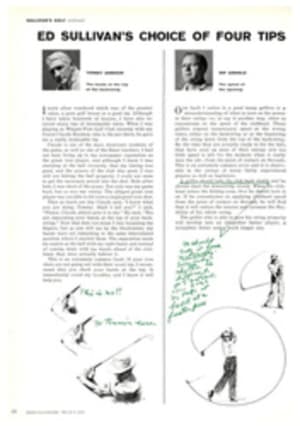
QUESTION: This spring I would like to try touring. Have you any advice on clothing, food or safety?
One of the most important things in planning a spring ski trip, or for skiing any time in March, is the choice of clothing. Wear several layers of light garments which are warm during the zero temperatures of early morning and which can be rolled into a tight package until needed. Conventional long underwear is not necessary. A set of the net-weave underwear will be plenty warm and still not overheat you under the noon sun. Over this put on a turtle-neck, long-sleeved T shirt made of nylon and cotton. Then two light sweaters, a silk scarf and, finally, a light nylon parka. These layers together will keep you warm in any storm.
In the spring the snow acts as a giant reflector for the sun. Take a pair of sunglasses (not goggles—they will fog up in the heat) with plastic rims and side protectors. Wear them at all times. Nothing is more uncomfortable than sunburned eyes, and that's what you get without glasses. Keep your face well protected with sun cream. And carry a special lip cream. If you have other vulnerable spots, put a little white zinc oxide on to shut off the sun.
Carry a packsack to hold extras. For a half-day trip the small belt sack is ideal. For a longer trip use a rucksack with a rigid frame designed to keep the sack off your back. The rucksack should buckle around the waist to lie snug when you ski.
Take a box of dried figs, plums, raisins or other dried fruit for quick energy. Honey in a tube, sugar lumps or grape sugar pills also give a boost. Take cans of concentrated fruit juices which can be thinned with snow to make a refreshing drink. Try rye bread or rye crackers. Avoid big sandwiches or other heavy foods which will make you sleepy and uncomfortable. For these same reasons leave the liquor home. Fortify yourself with a big breakfast and then take energy snacks and you will ski comfortably.
If you are going into strange country take at least one experienced guide, ski instructor or skier experienced in touring. When you leave tell someone where you are going and when you expect to get back. Make certain that if you are late they will come looking for you. If there is a Snow Ranger around, he is the man to inform. Get a weather report before you leave. In spring a storm can strike quickly.
When you start out move slowly and steadily. You will cover much more ground than if you rush and rest, rush and rest. It is not necessary to carry rope unless you are going into exceptionally difficult high mountain terrain. If you are going that far bring along 50 to 80 feet of light nylon line, dyed blue or red to contrast with the snow. Always rope up if you are crossing any snow-field steeper than 15° and cross the slope one at a time.
There is no sure way to avoid a potential avalanche, but here are a few rules: 1) stay off the steep open slopes and out of steep gullies; 2) do not ski close to trees or rocks, since heat radiation near them may rot the underlying layers of snow and cause a potential avalanche condition that you cannot see from the surface; 3) stick your pole hard into the snow and see if the color of the snow in the hole is greenish blue. If it is, this means the underlying layers are beginning to soften and avalanche danger is building up; 4) if there is an air space under the upper layers of snow, get off the snowfield immediately. It is ready to let go.
One last tip. Always take climbing skins. You may not need them, but they will take up very little room in your sack, and they make climbing immeasurably easier.
PHOTO

